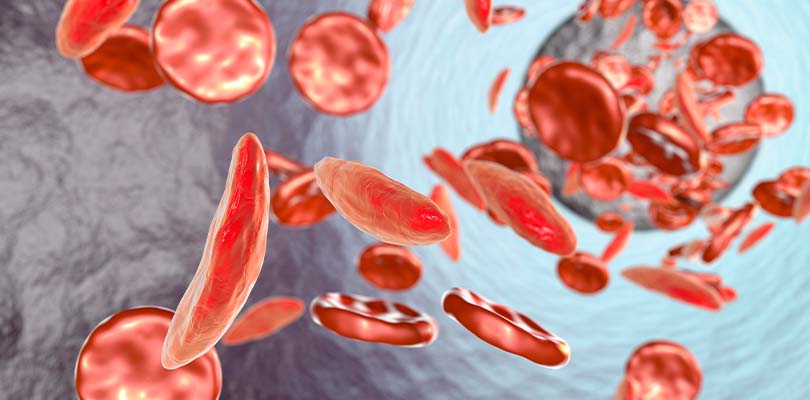Asthma Management
Asthma is a chronic respiratory disease that causes inflammation and constriction or narrowing of the airways. The condition can lead to symptoms, such as chest tightness, wheezing, and shortness of breath. It some cases, symptoms can become life-threatening.
According to the American College of Allergy, Asthma, and Immunology, about 26 million people in the United States have asthma. Researchers are not entirely clear why some people develop asthma.
Certain risk factors, such as having a relative with asthma, being a smoker or being overweight increase your chances of developing the condition.
Although there is currently no cure for asthma, there are several things you can do to manage the condition, prevent flare-ups, and improve your quality of life.
Identify and Reduce Asthma Triggers to Prevent Flare-ups
Several things can trigger asthma symptoms. Once you identify factors, which may cause an asthma attack, you can develop ways to reduce triggers and manage your asthma effectively.
Asthma triggers vary from person to person but may include:
Allergies
Asthma symptoms may be triggered by an allergy to certain substances. Common allergens include pet dander, mold, and dust mites. If allergies are a problem for you, consider reducing exposure to the allergen as much as possible.
Depending on your allergens consider the following suggestions:
- Wash bedding in hot water weekly to decrease dust mites.
- Check air quality daily and plan outdoor activities accordingly.
- To decrease mold, try to keep the humidity level in your house at 50 percent or less. A dehumidifier can help. Use a gadget called a hygrometer, which can be found at hardware stores to check humidity level.
- Remove clutter from your bedroom, such as trinkets, books, and magazine that may gather dust.
Stress
Emotional stress is thought to trigger asthma symptoms in some people.
If stress is a problem for you, consider ways to unwind and relax, such as meditation, yoga or deep breathing. Also, talk with your doctor about additional stress reduction options.
Infections
Respiratory infections, such as a cold or flu, can lead to asthma symptoms. Considering getting a flu shot each year. Also, frequent handwashing is one of the best ways to decrease your chances of getting sick.
Keep your immune system strong by eating a healthy diet and getting enough sleep each night.
Exercise
Physical exercise sometimes triggers asthma symptoms. Although you don’t want to avoid exercise, you can develop ways to decrease symptoms when you do a workout.
Don’t exercise outdoors in very hot or cold weather and always do a warm-up for five to ten minutes before doing vigorous activity. Talk with your doctor about using a fast-acting inhaler before exercise.
The good news is, with so many asthma medication options at your fingertips, there’s a very good chance you’ll find a combination that works well for you.
Early Identification of an Asthma Flare-up
Even if you do your best to prevent asthma triggers, in some instances, asthma symptoms may still develop. Recognizing early warning signs of an asthma attack can often prevent symptoms from becoming worse.
The following tips may help you identify an asthma flare-up quickly:
- Track your peak flow. A peak flow meter is a device that measures the amount of air you can blow out in one breath. Measure your peak flow every day for a week when you are healthy. Determine what is “normal” for you.
- Develop an asthma action plan with your doctor. An asthma action plan is instructions on how to manage your asthma. Your plan should include what symptoms to watch for, medications to take and when to contact the doctor or call 911.
- Recognize early warning signs. Early warning signs of an asthma attack may include mild wheezing, coughing, and chest tightness. A peak flow measurement of between 50 to 80 percent of your norm is also an indicator your asthma may be getting worse.
Medications for Asthma
There are different categories of medication used to treat asthma. Your doctor will determine, which medications you may need. In some cases, it may take a little trial and error before finding the right combination of medicines.
Your asthma management plan may include the following categories of medication:
- Fast-acting bronchodilators: Fast-acting bronchodilators are also sometimes called rescue inhalers because you take them for quick relief when you have symptoms. Different classifications of fast-acting bronchodilators include short-acting beta-agonists and anticholinergics. Bronchodilators work by relaxing the smooth muscles of the airways. As the muscles relax, they widen, which makes it easier to move air in and out of the lungs.
- Long-acting bronchodilators: Long-acting bronchodilators are taken daily even if you are not having any symptoms. They are used to prevent asthma symptoms from developing. Long-acting bronchodilators are not used to treat sudden symptoms, so they should not be confused with fast-acting bronchodilators.
- Inhaled corticosteroids: Inhaled corticosteroids treat the airway inflammation that can also occur with asthma. Corticosteroids are also taken daily as a control medication to prevent symptoms. They should also not be taken to treat sudden asthma symptoms.
- Leukotriene modifiers: Leukotriene modifiers also treat inflammation, but they do not work the same as a steroid. Instead, they block the effect of leukotrienes. Leukotrienes are a substance that is released into the lungs during an asthma attack. When leukotrienes are released, it can cause excess mucus and narrowing of the airways. When you block the action of leukotrienes, it may prevent asthma symptoms from developing.
Emergency Care
Asthma can be life-threatening. Every asthma action plan should have information on when to seek immediate emergency treatment for an asthma attack. The following symptoms indicate emergency treatment is needed:
- Severe shortness of breath, which makes talking difficult
- No improvement after using your fast-acting bronchodilator
- Bluish lips or skin
- Peak flow 50 percent or less of your normal
- Non-stop coughing
In a severe asthma attack, treatment, such as intravenous steroids, continuous breathing treatments, and oxygen may be needed.
Do not hesitate to call 911 if the above symptoms are present. It’s always better to err on the side of caution and get checked out.







